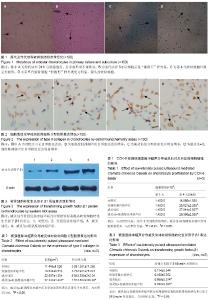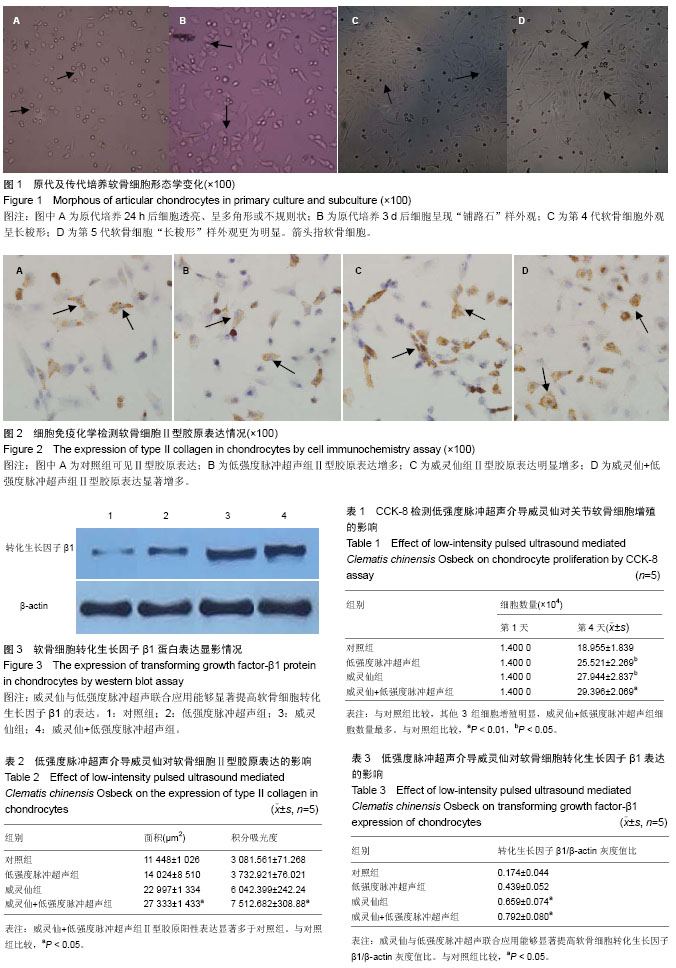| [1] 陈飞雁,顾湘杰,钟明康,等.威灵仙注射液对骨关节炎关节液与软骨白介素-1水平的影响[J].中国矫形外科杂志, 2004,12(7): 524-526.
[2] 马勇,张允中,陈金飞,等.威灵仙干预体外培养兔膝关节软骨细胞增殖及转化生长因子β1mRNA基因的表达[J].中国组织工程研究与临床康复,2010,14(11):1901-1906.
[3] 马勇,吴健.中医内治膝骨性关节炎常用处方饮片分析[J].中医正骨,2005,17(12):58-59.
[4] 孙殿统,孙海霞,巴占生,等.中医辨证治疗裕固族地区骨性关节炎的临床研究[J].内蒙古中医药,2010, 29(21):13-15.
[5] 赵燕强,杨立新,张宪民,等.威灵仙的成分、药理活性和临床应用的研究进展[J].中药材,2008,31(3):465-470.
[6] 陈飞雁,王旭,黄加张,等.威灵仙注射液对骨关节炎模型动物软骨组织形态和胶原表达的影响[J].中国矫形外科杂志, 2006,14(5): 360-363.
[7] 徐扬,桂鉴超,高峰,等.威灵仙提取物干预膝骨关节炎软骨细胞的生长活力[J].中国组织工程研究,2013(2):241-246.
[8] Wu W, Xu X, Dai Y, et al. Therapeutic effect of the saponin fraction from Clematis chinensis Osbeck roots on osteoarthritis induced by monosodium iodoacetate through protecting articular cartilage. Phytother Res.2010;24(4): 538-546.
[9] Hsieh MS, Wang KT, Tseng SH, et al. Using 18F-FDG microPET imaging to measure the inhibitory effects of Clematis chinensis Osbeck on the pro-inflammatory and degradative mediators associated with inflammatory arthritis. J Ethnopharmacol.2011;136(3):511-517.
[10] 蒋恺,崔维顶,任科伟,等.低强度脉冲式超声波对大鼠软骨细胞增殖和基质合成的影响[J].江苏医药,2011,37(12):1391-1393.
[11] Lubbert PH, van der Rijt RH, Hoorntje LE, et al. Low-intensity pulsed ultrasound (LIPUS) in fresh clavicle fractures: a multi-centre double blind randomised controlled trial. Injury. 2008;39(12):1444-1452.
[12] Zhang ZJ, Huckle J, Francomano CA, et al. The effects of pulsed low-intensity ultrasound on chondrocyte viability, proliferation, gene expression and matrix production. Ultrasound Med Biol.2003;29(11):1645-1651.
[13] 安恒远,李雪萍,王大新,等.低强度脉冲超声波对软骨细胞中金属蛋白酶-13与Ⅱ型胶原的影响[J].中国康复医学杂志,2011,26(3): 226-231.
[14] 李卫平,蹇睿,胥方元.超声波对实验性兔膝骨关节炎软骨细胞基质金属蛋白酶-1表达的影响[J].中国康复医学杂志,2011,26(10): 911-914.
[15] 贾小林,陈文直,司海鹏,等.超声对兔关节软骨损伤的修复作用[J].中华创伤杂志,2004,20(2):97-99.
[16] Marmottant P, Hilgenfeldt S. Controlled vesicle deformation and lysis by single oscillating bubbles. Nature. 2003;423 (6936):153-156.
[17] 马春辉,阎作勤,郭常安,等.Ⅱ型胶原与Bcl-2在骨关节炎软骨细胞中的表达[J].中国矫形外科杂志,2012,20(19):1786-1789.
[18] Naito K,Watari T,Muta T,et al.Low-intensity pulsed ultrasound (LIPUS) increases the articular cartilage type II collagen in a rat osteoarthritis model. J Orthop Res.2010;28(3):361-369.
[19] Wu W, Gao X, Xu X,et al.Saponin-rich fraction from Clematis chinensis Osbeck roots protects rabbit chondrocytes against nitric oxide-induced apoptosis via preventing mitochondria impairment and caspase-3 activation.Cytotechnology. 2013; 65(2):287-295.
[20] 孙必强,张鸣,李美珍,等.李果丽威灵仙注射液关节腔离子导入对骨关节炎NO、SOD和PGE2的影响[J].中国民族民间医药,2014, 23(9):6-7.
[21] 周效思,周凯,谭安雄,等.威灵仙对兔膝骨关节炎结构和功能的影响[J].时珍国医国药,2011,22(10):2454-2456.
[22] 周效思,周凯,封芬威.灵仙对兔膝骨关节炎IL-1β、TNF-α、PGE2的影响[J].时珍国医国药,2011,22(5):143-1144.
[23] 华英汇,顾湘杰,陈世益,等.威灵仙注射液对骨关节炎影响的实验研究[J].中国运动医学杂志,2003,22(4):420-422.
[24] 华英汇,陈世益,顾湘杰,等.威灵仙注射液对膝关节骨性关节炎临床疗效的观察[J].中国运动医学杂志,2003,22(1):90-91. |

